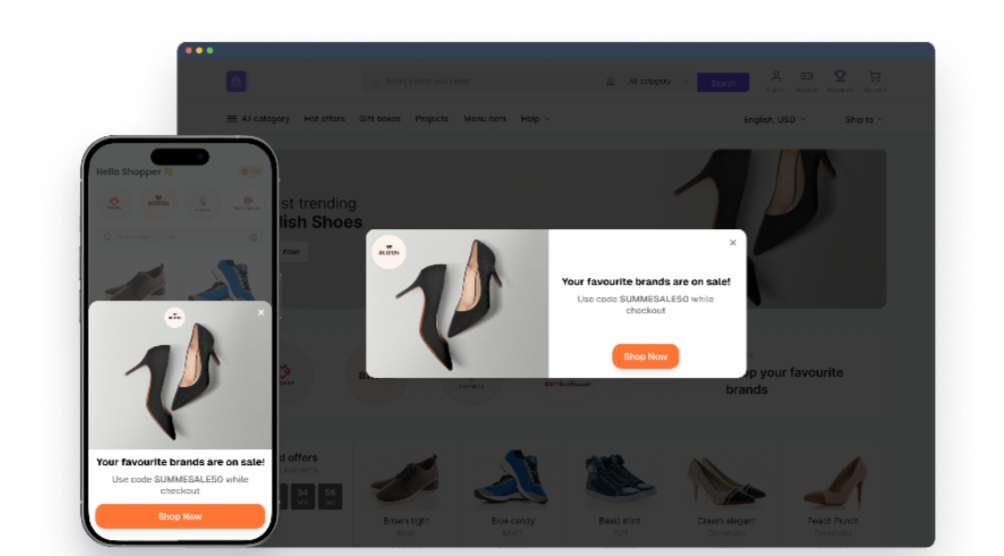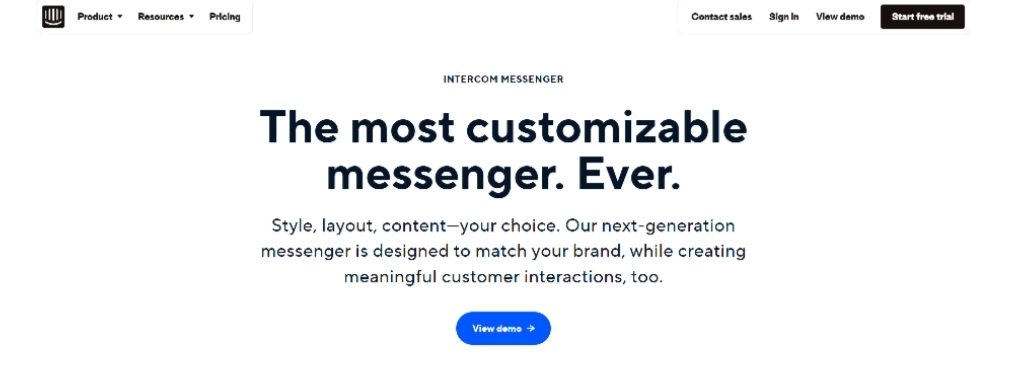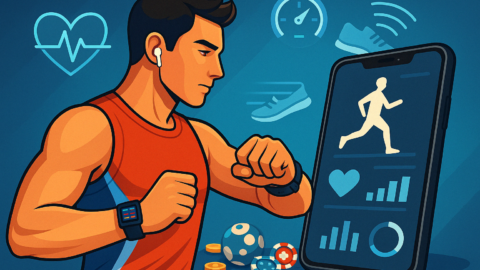In-app messaging has become a critical tool for communicating directly with users within their apps or websites. It offers a personalized, engaging way to interact with users and provide them with information, updates, or promotions. Unlike traditional communication channels like emails or push notifications, in-app messaging allows for more contextual and relevant interactions right when users are most engaged.
Importance of In-app Messaging
In-app messaging is an essential part of any mobile or web-based business strategy. Here’s why in-app messaging is crucial:
- User Engagement: In-app messaging increases user interaction by delivering content, updates, or tips directly within the app, reducing the chances of users disengaging or uninstalling the app.
- Personalization: You can deliver highly targeted messages based on user behavior, preferences, and demographics. Personalized messages are proven to lead to higher engagement and conversion rates.
- Real-Time Communication: In-app messaging allows you to communicate with users instantly, providing updates, promotions, or troubleshooting tips exactly when the user needs them.
- Improved Retention: By sending helpful and engaging messages, you can keep users coming back to the app, reducing churn rates.
- Clearer Communication: In-app messages can clarify product features, offer tips, or share updates, all within the context of the app, making it easier for users to understand the information provided.

Top 5 Tools for In-App Messaging

1. Nudge
Nudge is an innovative in-app messaging tool designed to help businesses build personalized communication with their users. It offers features such as in-app widgets, nudges, and notifications that enable businesses to send timely messages at the right moment.
Key Features:
- Interactive Nudges: Nudge allows businesses to send personalized nudges that can include images, videos, and calls to action, which help increase user engagement.
- In-App Widgets: These widgets can be used for providing contextual assistance or offering promotions directly within the app.
- Behavior-Based Targeting: Nudge lets you send messages based on user behavior, which ensures that the messages are relevant and timely.
- Customizable Design: You can customize the appearance of the messages to match the app’s design, providing a seamless experience for users.

2. Intercom
Intercom is one of the most popular in-app messaging tools available today. It’s known for its ability to help businesses communicate with users not only within the app but across multiple channels, including email and web chat. Intercom is designed to help businesses build stronger relationships with users through personalized communication.
Key Features:
- Multi-Channel Communication: Intercom supports in-app messaging, email, push notifications, and live chat, ensuring a seamless experience across multiple touchpoints.
- User Segmentation: With Intercom, you can segment users based on their behavior, location, and other factors to send the most relevant messages.
- Automated Messaging: Intercom provides automated message delivery based on specific triggers, reducing manual work while ensuring timely engagement.
- Rich Media Support: You can include rich media like images, GIFs, and videos in your messages to make them more engaging.

3. OneSignal
OneSignal is another popular in-app messaging platform, especially known for its push notification capabilities. It also allows businesses to send in-app messages, making it a versatile tool for increasing user engagement. OneSignal offers a free tier with many features, making it an excellent choice for businesses of all sizes.
Key Features:
- Push Notifications and In-App Messaging: OneSignal lets you send both push notifications and in-app messages, giving you flexibility in how you communicate with your users.
- Automation and Triggers: With OneSignal, you can create automated messaging sequences based on user actions or events in the app.
- User Segmentation: You can target specific groups of users with tailored messages, increasing the relevance and effectiveness of your campaigns.
- A/B Testing: OneSignal includes A/B testing features that allow you to experiment with different message variations to see which performs best.

4. Braze
Braze is a leading customer engagement platform that offers in-app messaging as part of its comprehensive suite of tools. It is designed to help businesses engage with users across multiple channels, including in-app messaging, push notifications, and email. Braze focuses on personalization and real-time communication, helping businesses build lasting relationships with their customers.
Key Features:
- Omnichannel Engagement: Braze allows businesses to create personalized, cross-channel messaging campaigns that engage users wherever they are.
- Real-Time Messaging: You can send in-app messages in real-time based on user actions or events, ensuring that the message is relevant at that moment.
- Advanced Analytics: Braze provides in-depth analytics and reporting tools to help you track the performance of your in-app messaging campaigns and optimize them for better results.
- Customizable Messages: Braze offers a high degree of customization, allowing businesses to create tailored in-app messages that align with their brand and user experience.
5. MoEngage

MoEngage is a customer engagement platform that specializes in automation and personalization, making it an excellent choice for businesses looking to optimize their in-app messaging strategies. MoEngage helps businesses send the right messages at the right time based on user behavior and preferences
Key features:
- Behavioral Targeting: MoEngage lets you create in-app messages based on user behavior, such as app usage, purchase history, or user location.
- Automation: You can automate the delivery of messages to users based on predefined triggers, ensuring that users receive timely and relevant content.
- Personalized Campaigns: MoEngage enables businesses to send personalized messages based on user segments, increasing engagement and conversion rates.
- Cross-Channel Messaging: MoEngage supports in-app messaging, push notifications, email, and SMS, allowing businesses to communicate with users across multiple channels.
Conclusion
The right in-app messaging tool can help you deliver personalized, relevant content to users at the right time, improving their overall experience and increasing the likelihood of desired actions. Book a demo with Nudge to get the full advantage of in-app messaging to create more meaningful, personalized interactions with your users.








